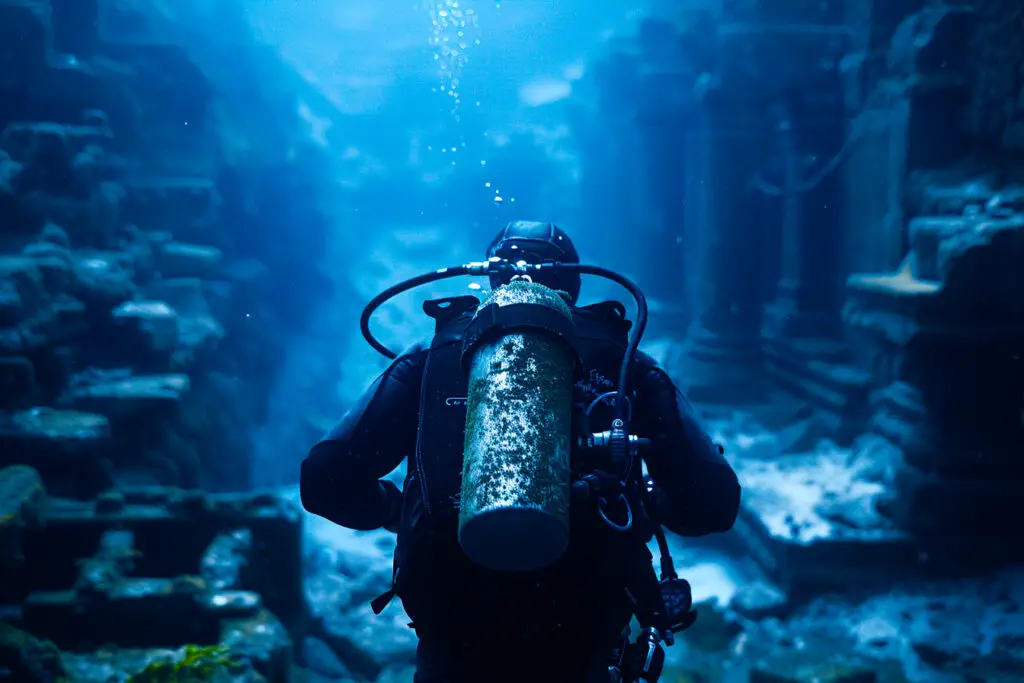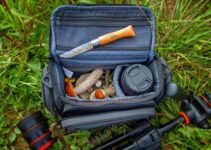How to clean an underwater camera housing? Have you ever wondered how professionals maintain their camera gear to capture those stunning underwater shots?
Keeping your underwater camera housing clean is crucial for optimal performance and longevity. Let’s dive into the essentials of maintaining your gear for pristine underwater photography.
In short, cleaning an underwater camera housing involves meticulous attention to detail.
From using specialized cleaning solutions to ensuring a thorough rinse after each dive, every step plays a vital role in preserving your equipment.
Discover the best practices and expert tips to keep your camera housing in top condition for captivating underwater visuals.
Curious to explore the step-by-step process and insider secrets from renowned underwater photographers? Dive into our comprehensive guide on cleaning underwater camera housings, curated by industry experts.
Uncover the techniques that professionals swear by to maintain their gear and capture breathtaking moments beneath the waves.
Here how to use underwater camera?
Is it worth to clean a underwater camera housing?
Yes, it’s definitely worth cleaning your underwater camera housing regularly.

Keeping it clean helps maintain the clarity of your photos and videos, ensuring that water spots, algae, or debris don’t obscure your shots. Here’s why:
- Image Quality: A clean housing means clearer images. Water spots or dirt on the housing can distort or block your camera’s lens, affecting the quality of your footage.
- Protection: Regular cleaning helps protect your housing from long-term damage. Saltwater, in particular, can be corrosive, so cleaning it after each use can extend its lifespan.
- Professionalism: If you’re a professional photographer or videographer, clean equipment is a must. It reflects attention to detail and can make a significant difference in the final output.
- Functionality: Clean housings ensure that buttons, seals, and other mechanisms work smoothly, reducing the risk of malfunctions underwater.
Investing a little time in cleaning your underwater camera housing can go a long way in preserving its performance and the quality of your underwater shots.
When should you clean a underwater camera housing
Cleaning an underwater camera housing is essential for maintaining its functionality and ensuring clear, high-quality images.
You should clean the housing before and after every dive to prevent salt, sand, and debris buildup.
Before a dive, inspect and clean the O-rings, removing any dust or grit, as these can compromise the seal and lead to leaks.
After a dive, rinse the housing thoroughly in fresh water to remove salt and contaminants. Allow it to soak if possible, especially if it has been exposed to saltwater, which can cause corrosion.
Dry it completely with a soft, lint-free cloth before opening it to avoid water entering the housing.
Additionally, perform a more detailed cleaning periodically, particularly after several dives or if you notice any difficulty with the controls.
This includes checking for wear and tear on the O-rings and lubricating them as needed. Regular maintenance ensures the longevity of your underwater camera housing and the safety of your camera.
Here, does alaska airline count camera bag as a carry on?
Things to know before cleaning a underwater camera housing
Before cleaning your underwater camera housing, there are several important things to keep in mind:
- Materials: Use cleaning materials specifically designed for underwater camera housings. Avoid harsh chemicals or abrasive tools that could damage the housing’s seals or coatings.
- Rinsing: Rinse the housing with fresh water immediately after each dive to remove salt, sand, or debris. This prevents these substances from causing corrosion or buildup.
- Drying: Allow the housing to dry thoroughly before opening it or storing it to prevent moisture from causing damage internally.
- Seals Inspection: Check the seals and O-rings regularly for any signs of wear or damage. Replace them if necessary to maintain the housing’s waterproof integrity.
- Storage: Store the housing in a cool, dry place away from direct sunlight and extreme temperatures. Use a protective case or bag to prevent dust or scratches.
By following these guidelines, you can ensure that your underwater camera housing remains in good condition, prolonging its lifespan and preserving the quality of your underwater photography or videography.
How to clean a underwater camera housing?
To clean an underwater camera housing:
- Rinse: Start by rinsing the housing with fresh water to remove salt, sand, and debris. Use a gentle stream to avoid damaging delicate parts.
- Soak: Fill a container with warm water and a mild detergent suitable for underwater equipment. Submerge the housing and let it soak for a few minutes to loosen any stubborn residue.
- Clean: Use a soft brush or cloth to gently scrub the housing, focusing on areas with visible dirt or water spots. Avoid using abrasive materials that could scratch the surface.
- Rinse Again: Rinse the housing thoroughly with fresh water to remove any soap residue or remaining debris.
- Dry: Allow the housing to air dry completely before opening it or storing it. Use a lint-free cloth to pat dry any remaining moisture.
- Seals Maintenance: While cleaning, inspect the seals and O-rings for wear or damage. Apply a thin layer of silicone grease if needed to maintain waterproof integrity.
By following these steps, you can effectively clean your underwater camera housing and ensure optimal performance for your underwater photography or videography.
Here, how do i clean a canvas and leather bag?
How do you keep your camera housing dust free?
Keeping your camera housing dust-free requires a few simple steps:
- Storage: Store your camera housing in a clean, dust-free environment when not in use. Use a protective case or bag to shield it from dust and debris.
- Cleaning Routine: Regularly clean your camera housing using a soft, lint-free cloth to remove any dust or particles that may have settled on its surface.
- Seal Maintenance: Check and maintain the seals and O-rings regularly. Properly sealed housing prevents dust from entering and affecting the internal components.
- Pre-Dive Inspection: Before each use, inspect the housing for any signs of dust or debris. Use a blower brush or air canister to gently remove any particles.
- Avoid Exposure: Minimize exposure of the housing to dusty or dirty environments whenever possible, especially during storage and transport.
By implementing these practices, you can significantly reduce the accumulation of dust on your camera housing, ensuring clear and dust-free shots during your underwater adventures.
9 steps to clean a underwater camera housing
1. Initial Rinse
Explanation: Begin by giving the underwater camera housing a thorough rinse with fresh water as soon as possible after each dive.
This step is crucial to remove salt, sand, and other debris that may have adhered to the housing during the dive.
Use a gentle stream of water rather than high-pressure jets to avoid forcing water into seals or damaging delicate parts.
If the housing has any moving parts, actuate them while rinsing to ensure that any trapped debris is flushed out.
Tips:
- Use lukewarm water if possible, as it can help dissolve salt more effectively.
- Avoid using tap water that might be heavily chlorinated, as chlorine can damage seals over time.
2. Soak in Fresh Water
Explanation: After the initial rinse, soak the housing in a container filled with clean, fresh water.
This soaking process helps to loosen and dissolve any remaining salt, dirt, or biological materials that may not have been removed during the initial rinse.
Depending on the level of contamination, soak the housing for anywhere from a few minutes to an hour.
Tips:
- If the housing is heavily soiled, consider changing the water halfway through the soaking process.
- Avoid using detergents at this stage unless they are specifically designed for use with underwater housings.
3. Use Mild Detergent
Explanation: For a deeper clean, prepare a solution of warm water and a mild detergent specifically designed for underwater camera housings or delicate equipment.
Submerge the housing in this solution and allow it to soak for a few more minutes. The detergent helps to break down any oils, algae, or other stubborn contaminants.
Tips:
- Use a soft cloth or sponge to gently wipe down the exterior surfaces while the housing is soaking.
- Avoid using abrasive cleaners or harsh chemicals, which can damage the housing and seals.
4. Clean with Soft Brush
Explanation: Using a soft brush, such as a toothbrush with soft bristles, gently scrub the housing. Pay special attention to seams, buttons, and any other areas where debris might accumulate.
This step ensures that all small particles and residues are removed, which helps maintain the housing’s functionality and appearance.
Tips:
- Be gentle to avoid scratching the housing’s surface or dislodging seals.
- Use a brush with bristles soft enough to reach into crevices without damaging the housing.
Here, what is the best way to clean a tote bag?
5. Final Rinse
Explanation: After cleaning with the detergent solution, give the housing a final thorough rinse with fresh water.

This step removes any remaining soap residues and ensures that no cleaning agents are left on the housing, which could attract dirt or potentially damage the housing over time.
Tips:
- Use a gentle stream of water to ensure all soap is rinsed away.
- Actuate buttons and moving parts again during this rinse to clear out any soap that may have entered these areas.
6. Drying
Explanation: Carefully dry the housing with a clean, lint-free cloth to remove the majority of the water.
Then, allow the housing to air dry completely in a well-ventilated area. Ensure that all parts, especially any small crevices, are thoroughly dry to prevent mold or mildew growth.
Tips:
- Avoid using compressed air to dry the housing, as this can force water into sealed areas.
- Place the housing in an upside-down position to allow water to drain out from hard-to-reach areas.
7. Inspect Seals and O-Rings
Explanation: While the housing is drying, take the time to inspect all seals and O-rings for any signs of wear, damage, or debris.
O-rings are critical components that ensure the waterproof integrity of the housing, so it’s essential they are in good condition.
Tips:
- If any O-rings are damaged or excessively worn, replace them before using the housing again.
- Apply a thin layer of silicone grease to the O-rings to maintain their flexibility and sealing properties.
8. Lubricate Moving Parts
Explanation: Apply a small amount of silicone lubricant to any moving parts such as buttons, levers, and hinges.
This step ensures that all parts move smoothly and reduces wear and tear, which can help maintain the housing’s functionality over time.
Tips:
- Use a lubricant recommended by the housing manufacturer to avoid any compatibility issues.
- Avoid over-lubricating, as excess grease can attract dirt and debris.
9. Proper Storage
Explanation: Once the housing is completely dry and all maintenance steps are complete, store it in a cool, dry place away from direct sunlight and extreme temperatures.
Use a protective case or bag to shield it from dust and physical damage. Proper storage helps maintain the housing’s condition and ensures it’s ready for your next dive.
Tips:
- Store the housing with the main O-ring removed and stored separately in a sealed bag to prevent it from becoming compressed.
- Avoid storing the housing in a humid environment to prevent mold and mildew growth.
By following these nine steps, you can ensure that your underwater camera housing remains clean, functional, and ready for your next underwater adventure.
Here, how do you clean a canvas saddle bag?
7 Methods to clean a underwater camera housing
1. Freshwater Rinse
Explanation: The first and most straightforward method to clean your underwater camera housing is a thorough rinse with fresh water.
After each dive, promptly rinse the housing to remove any salt, sand, or other debris. This initial rinse is crucial as saltwater can be particularly corrosive, and leaving it on the housing can cause long-term damage.
Procedure:
- Use a gentle stream of lukewarm fresh water to rinse the entire housing.
- Pay special attention to buttons, seams, and other crevices where salt and debris can accumulate.
- Actuate any moving parts like buttons or levers during the rinse to ensure that all contaminants are flushed out from beneath them.
- Avoid using high-pressure water jets, as these can force water into seals and other sensitive areas.
Benefits:
- Prevents salt and mineral buildup.
- Reduces the risk of corrosion and other saltwater damage.
- Ensures that debris does not interfere with the housing’s seals and moving parts.
Tips:
- Perform this rinse as soon as possible after diving to prevent the salt from drying on the housing.
- If fresh water is not immediately available, rinse the housing in bottled water until you can perform a more thorough cleaning.
2. Soaking in Warm Water
Explanation: Soaking the housing in warm water is an effective method for removing stubborn salt deposits and other residues that may not come off with a simple rinse.
This method is particularly useful after diving in saltwater or dirty environments.
Procedure:
- Fill a basin or container with lukewarm fresh water.
- Submerge the entire housing in the water and let it soak for 15-30 minutes.
- Occasionally agitate the water or move the housing around to help dislodge any particles.
- After soaking, rinse the housing again with fresh water to remove any loosened debris.
Benefits:
- Helps dissolve and remove salt deposits more effectively than a rinse alone.
- Loosens dirt and debris that may be stuck in crevices or around buttons.
- Provides a more thorough cleaning, especially after repeated exposure to saltwater.
Tips:
- Use water that is warm, not hot, to avoid damaging the housing or its seals.
- Soak the housing immediately after rinsing to maximize the effectiveness of this method.
- If the housing is heavily soiled, consider changing the water halfway through the soaking process.
Here, how to clean your canvas saddle camera bag?
3. Using Mild Detergent
Explanation: For a deeper clean, especially when dealing with oils, algae, or other stubborn contaminants, using a mild detergent is highly effective.
The detergent helps to break down and remove residues that water alone cannot.
Procedure:
- Prepare a solution of lukewarm water and a few drops of mild detergent suitable for delicate equipment.
- Submerge the housing in the solution and let it soak for about 10-15 minutes.
- Use a soft cloth or sponge to gently wipe down the housing, paying special attention to seams, buttons, and areas with visible dirt.
- Rinse the housing thoroughly with fresh water to remove all soap residues.
Benefits:
- Removes oils, algae, and other contaminants that can adhere to the housing.
- Ensures a more comprehensive cleaning, maintaining the housing’s functionality and appearance.
- Helps in maintaining the clarity of your housing, ensuring better image quality.
Tips:
- Choose a detergent that is mild and designed for delicate or underwater equipment to avoid damage.
- Avoid using too much detergent; a few drops are usually sufficient.
- Make sure to rinse thoroughly to prevent soap residues from attracting more dirt or interfering with seals.
4. Soft Brush Cleaning
Explanation: Using a soft brush, such as a toothbrush with soft bristles, allows you to gently scrub away any remaining debris or residue.
This method is effective for cleaning intricate parts of the housing where dirt can accumulate.
Procedure:
- After soaking the housing in warm water or a detergent solution, use a soft brush to gently scrub all surfaces.
- Focus on seams, buttons, and other small areas where debris may be lodged.
- Be gentle to avoid scratching the housing or damaging any seals.
- Rinse the housing thoroughly with fresh water after brushing to remove all loosened particles.
Benefits:
- Provides a detailed clean, reaching into small crevices and around buttons.
- Helps ensure that no debris remains that could compromise the housing’s seals.
- Maintains the aesthetic and functional integrity of the housing.
Tips:
- Use a brush with soft bristles to avoid scratching the housing’s surface.
- Be cautious around O-rings and seals to avoid dislodging or damaging them.
- Rinse the brush frequently during the cleaning process to prevent re-depositing dirt.
5. Air Drying
Explanation: Properly drying your underwater camera housing is essential to prevent moisture-related issues such as mold or corrosion.
Air drying ensures that all water is evaporated from the housing, especially from hard-to-reach areas.
Procedure:
- After rinsing and cleaning, shake off excess water from the housing.
- Use a clean, lint-free cloth to pat dry the exterior surfaces.
- Place the housing in a well-ventilated area and allow it to air dry completely.
- Ensure that all buttons and moving parts are actuated periodically to help expel trapped water.
Benefits:
- Prevents moisture-related damage such as mold, mildew, and corrosion.
- Ensures that the housing is thoroughly dry before storage or reassembly.
- Helps maintain the housing’s longevity and functionality.
Tips:
- Avoid using heat sources such as hairdryers, as excessive heat can damage seals and other components.
- Position the housing upside-down to allow water to drain from hard-to-reach areas.
- Ensure complete drying before storing the housing to avoid trapping moisture inside.
Here, how do you clean a canvas bag with leather strap?
6. Inspecting and Lubricating Seals
Explanation: The seals and O-rings of your underwater camera housing are critical for maintaining its waterproof integrity.

Regular inspection and lubrication are necessary to ensure they remain in good condition and function properly.
Procedure:
- After drying the housing, carefully remove the O-rings and seals.
- Inspect them for any signs of wear, damage, or dirt. Replace any that are damaged or excessively worn.
- Clean the O-rings with fresh water and a lint-free cloth, ensuring all dirt and debris are removed.
- Apply a thin layer of silicone grease to the O-rings before reinstalling them, ensuring they are evenly coated but not overloaded with grease.
Benefits:
- Maintains the waterproof integrity of the housing.
- Extends the lifespan of the O-rings and seals.
- Ensures smooth operation of the housing’s buttons and levers.
Tips:
- Use only silicone grease recommended by the housing manufacturer to avoid compatibility issues.
- Be careful not to stretch or damage the O-rings during removal and reinstallation.
- Regularly inspect and maintain seals, especially before and after significant dives.
7. Proper Storage
Explanation: Proper storage of your underwater camera housing is essential to protect it from dust, physical damage, and environmental factors that can degrade its components.
Proper storage practices help ensure the housing is ready for use whenever you need it.
Procedure:
- Once the housing is completely dry and all maintenance steps are completed, store it in a cool, dry place.
- Use a protective case or bag to shield the housing from dust, dirt, and physical impacts.
- Store the housing with the main O-ring removed and stored separately in a sealed bag to prevent compression and deformation.
- Avoid storing the housing in direct sunlight or in areas with extreme temperatures, as these conditions can damage the housing and its components.
Benefits:
- Protects the housing from environmental damage and physical wear.
- Ensures the housing remains clean and ready for use.
- Extends the lifespan of the housing and its seals.
Tips:
- Store the housing in a position that avoids putting pressure on buttons or other protruding parts.
- If storing for an extended period, periodically check the housing and its components to ensure they remain in good condition.
- Consider using desiccant packs in the storage container to absorb any residual moisture.
By following these seven methods, you can effectively clean and maintain your underwater camera housing, ensuring it remains in optimal condition for all your underwater photography adventures.
5 benefits to clean a underwater camera housing
1. Enhanced Image Quality
Explanation: Cleaning your underwater camera housing regularly ensures that the lens port remains free of dirt, salt, and other debris.
These contaminants can cloud the lens, resulting in blurry or distorted images.
By keeping the housing clean, you maintain the clarity and sharpness of your photos and videos, which is especially important in underwater environments where visibility can already be compromised.
Details:
- Lens Clarity: A clean lens port allows your camera to capture clear and crisp images. Any dirt or residue on the housing can act as an additional lens, distorting the light and reducing image quality.
- Reduced Distortion: Removing salt and mineral deposits prevents the lens from distorting underwater scenes, ensuring accurate and true-to-life captures.
- Professional Results: For professional photographers and videographers, maintaining high-quality images is crucial. A clean housing ensures that your equipment performs at its best, delivering professional-grade results.
2. Prolonged Equipment Lifespan
Explanation: Regular cleaning helps to extend the lifespan of your underwater camera housing.
Saltwater is particularly corrosive, and if left unchecked, it can cause significant damage to the housing and its seals.
By cleaning the housing after each use, you prevent salt and other corrosive substances from causing wear and tear, ensuring that your equipment remains functional for a longer period.
Details:
- Corrosion Prevention: Saltwater can corrode metal parts and damage seals, leading to potential leaks. Regular cleaning removes these corrosive elements, protecting the integrity of your housing.
- Seal Longevity: By maintaining clean and lubricated seals, you prevent them from drying out or cracking, which can compromise the waterproof capabilities of the housing.
- Cost Savings: Extending the lifespan of your housing means fewer replacements and repairs, saving you money in the long run.
3. Reliable Functionality
Explanation: Cleaning your underwater camera housing ensures that all buttons, levers, and moving parts function smoothly.
Debris and salt buildup can cause these components to stick or malfunction, potentially leading to missed shots or equipment failure.
Regular maintenance keeps everything operating as it should, providing reliable performance during dives.
Details:
- Smooth Operation: Removing debris and salt ensures that buttons and levers move freely without sticking, allowing you to adjust settings and capture images with ease.
- Reduced Risk of Malfunctions: Regular cleaning minimizes the risk of mechanical failures due to salt and dirt buildup, providing peace of mind during dives.
- Consistent Performance: A well-maintained housing performs consistently, reducing the likelihood of unexpected issues that could disrupt your underwater photography sessions.
4. Prevention of Water Damage
Explanation: Regular cleaning and maintenance of your underwater camera housing help prevent water damage.
Ensuring that seals and O-rings are free from debris and properly lubricated maintains the housing’s waterproof integrity. This reduces the risk of leaks that could damage your camera and other internal components.
Details:
- Seal Integrity: Clean and well-maintained seals are essential for keeping water out of the housing. Regular inspection and cleaning ensure that seals remain effective.
- Leak Prevention: By removing debris and maintaining seals, you reduce the risk of leaks that could cause catastrophic water damage to your camera.
- Protecting Investment: Underwater camera equipment is a significant investment. Regular cleaning helps protect this investment by preventing costly water damage.
5. Improved Safety for Underwater Use
Explanation: A clean and well-maintained underwater camera housing enhances safety during dives.
Ensuring that all components are in good working order reduces the risk of equipment failure that could distract or endanger you while underwater.
Additionally, clear communication and reliable operation are crucial for safe diving practices.
Details:
- Reduced Distractions: Reliable equipment allows you to focus on your dive and the surrounding environment without worrying about camera issues, improving overall safety.
- Communication: In professional settings, clear and functional camera equipment is essential for communicating and documenting underwater activities safely.
- Peace of Mind: Knowing that your equipment is clean and well-maintained provides peace of mind, allowing you to enjoy your dive fully and focus on capturing stunning images.
By cleaning your underwater camera housing regularly, you ensure enhanced image quality, prolonged equipment lifespan, reliable functionality, prevention of water damage, and improved safety during underwater use.
These benefits collectively contribute to a better and more secure diving and photography experience.
7 hacks for underwater camera housing hacks
1. Use Silica Gel Packs
Explanation: Place silica gel packs inside the camera housing to absorb any moisture that might seep in. Moisture can cause fogging on the lens port, ruining your shots.
Silica gel packs help keep the inside of the housing dry, ensuring clear images and protecting your equipment from water damage.
Details:
- Placement: Tuck a few packs around the camera body inside the housing.
- Replacement: Change the packs regularly, especially after multiple dives.
- Availability: Silica gel packs are inexpensive and can be found in most packaging or purchased online.
2. Apply Anti-Fog Solution
Explanation: Use an anti-fog solution on the inside of the housing’s lens port to prevent fogging.
Fogging occurs when there is a temperature difference between the water and the air inside the housing. Anti-fog solutions or sprays create a film that prevents condensation.
Details:
- Application: Apply a small amount of the solution to a microfiber cloth and gently wipe the inside of the lens port.
- Frequency: Apply before each dive for the best results.
- Alternatives: In a pinch, a small amount of saliva can also work as an anti-fog solution.
3. Check Seals and O-Rings Regularly
Explanation: Before each dive, inspect the housing’s seals and O-rings for any signs of wear, dirt, or damage.
Ensuring that these components are in good condition is crucial for maintaining the waterproof integrity of the housing.
Details:
- Inspection: Look for cracks, dirt, or any irregularities.
- Cleaning: Use fresh water and a lint-free cloth to clean the seals.
- Lubrication: Apply a thin layer of silicone grease to keep the O-rings supple and effective.
4. Keep a Spare O-Ring Kit
Explanation: Carrying a spare O-ring kit ensures that you’re prepared for any unexpected issues.
O-rings are critical for waterproofing, and having spares allows you to replace them if they get damaged during a dive trip.
Details:
- Contents: A spare kit should include O-rings of various sizes and silicone grease.
- Storage: Keep the kit in a sealed bag or container to protect it from dirt and moisture.
- Usage: Familiarize yourself with replacing O-rings so you can do it quickly if needed.
5. Use a Freshwater Rinse Tank
Explanation: After each dive, immediately rinse your housing in a freshwater rinse tank. This step removes salt, sand, and debris that could cause corrosion or damage.
Details:
- Dunking: Submerge the housing in fresh water and move it around to dislodge debris.
- Soaking: Let the housing soak for a few minutes if it’s particularly dirty.
- Actuation: Operate buttons and levers underwater to ensure all contaminants are flushed out.
6. Store with Desiccant Packs
Explanation: Store your housing with desiccant packs to keep it dry during storage. Desiccant packs absorb ambient moisture, preventing mold and mildew growth inside the housing.
Details:
- Placement: Place desiccant packs inside the housing and in the storage case.
- Replacement: Check and replace the packs regularly to ensure they remain effective.
- Storage Conditions: Store the housing in a cool, dry place away from direct sunlight.
7. Label Your Housings and Gear
Explanation: Label your underwater camera housing and gear with your name and contact information. This practice is especially useful during group dives or trips where multiple divers have similar equipment.
Details:
- Methods: Use waterproof labels or permanent markers.
- Visibility: Place labels in visible locations on the housing and other equipment.
- Security: Labeling helps ensure that your gear is returned to you if it gets mixed up or lost.
By incorporating these hacks, you can enhance the longevity, functionality, and reliability of your underwater camera housing, ensuring a smoother and more enjoyable underwater photography experience.
Related faq’s
How to clean aquatech housing?
To clean an Aquatech housing, first, rinse the exterior with fresh water to remove salt and debris.
Open the housing and remove the camera and O-rings. Clean the O-rings with a lint-free cloth and inspect for damage. Wash the housing interior with a mild soap solution and a soft brush, then rinse thoroughly.
Dry with a lint-free cloth. Clean the ports with a lens cloth and lens cleaner.
Re-lubricate the O-rings with appropriate grease and reassemble the housing. Regularly perform these steps to maintain the housing’s condition and functionality.
How to keep underwater camera housing from fogging?
To prevent an underwater camera housing from fogging, ensure it’s completely dry before sealing. Use silica gel packets inside the housing to absorb moisture.
Store the housing in a cool, dry place before use. Avoid opening the housing in humid conditions.
Applying a thin layer of anti-fog solution or rubbing a small amount of dish soap on the inside of the lens can also help.
When underwater, avoid drastic temperature changes to reduce condensation. Regularly inspect and maintain the O-rings to ensure a proper seal.
How to keep water drops off camera housing?
To keep water drops off your camera housing, apply a water-repellent solution like Rain-X to the housing’s lens port. This helps water bead off instead of forming droplets.
Additionally, use a small amount of dish soap or saliva, evenly spread, to prevent water drops from clinging. For in-water use, frequently dip the housing to remove droplets.
Always ensure the lens port is clean before and after dives. A microfiber cloth can help quickly wipe away any drops on the surface. These steps help maintain clear visibility and prevent water spots in your photos and videos.
What is the O ring on underwater housing?
The O-ring on underwater housing is a critical component that ensures the watertight integrity of the housing.
Underwater housing is used to protect cameras, lights, or other electronic devices when used underwater, typically for scuba diving, snorkeling, or underwater photography.
Here are key points about the O-ring:
- Seal: The primary function of the O-ring is to create a seal that prevents water from entering the housing. It is usually made of a flexible material such as rubber or silicone, which can compress to form a tight seal.
- Placement: The O-ring is typically located in a groove around the edge of the housing’s door or closure. When the housing is closed, the O-ring is compressed against a flat surface, forming a barrier against water entry.
- Maintenance: Regular maintenance of the O-ring is essential to ensure its effectiveness. This includes:
- Inspection: Checking for any signs of wear, cracks, or damage.
- Cleaning: Removing any debris, sand, or dirt that can compromise the seal.
- Lubrication: Applying a silicone-based lubricant to keep the O-ring pliable and enhance the seal.
- Replacement: O-rings can wear out over time and need to be replaced periodically. It’s important to use the correct size and type of O-ring specified by the manufacturer of the housing.
- Types: There are different types of O-rings depending on the housing design. Some may use a single O-ring, while others may have a double O-ring system for extra security.
In summary, the O-ring is a vital component in underwater housing, ensuring that the equipment remains dry and functional while submerged.
Proper care and maintenance of the O-ring are crucial to prevent water leakage and potential damage to the housed device.
Conclusion:
Cleaning an underwater camera housing is crucial for its longevity and performance. After each dive, rinse the housing in fresh water to remove salt, sand, and debris.
Soak it if possible, especially after saltwater exposure. Gently dry with a lint-free cloth, paying special attention to the O-rings.
Inspect and clean the O-rings regularly, removing any dirt and applying silicone grease if needed. Periodically, conduct a thorough cleaning, checking for wear and tear.
Proper maintenance, including immediate cleaning after use, ensures reliable operation and extends the life of your underwater camera housing, safeguarding your equipment and preserving image quality.










